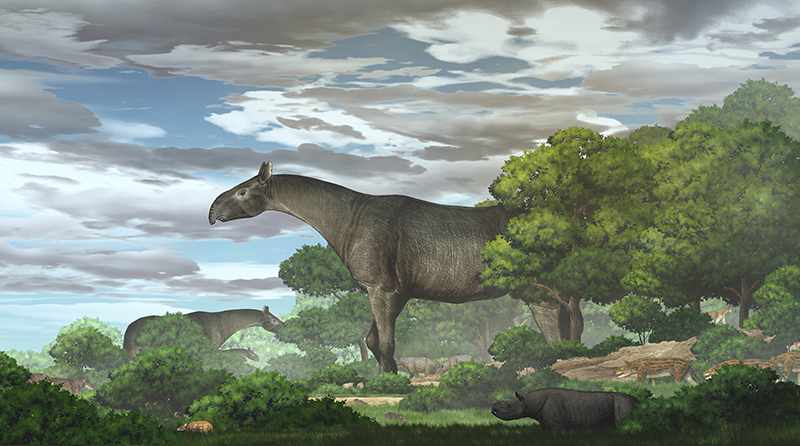
Modern-day rhinos, which weigh anywhere from 1,800 to 5,100 pounds, are no lightweights. However, they pale in comparison to their prehistoric cousin that roamed China about 26 million years ago. The massive mammal weighed 46,000 pounds — almost as much as four large African elephants. Standing at a height of 23ft (7m), it was also taller than a giraffe.
Dr. Tao Deng, from the Chinese Academy of Sciences, and his team stumbled upon remains of two specimens of the massive rhino in the Linxia Basin in northwest China in 2015. One fossil comprised a perfectly preserved skull, jawbone, teeth, and the atlas vertebra, which connects the head to the spine. The second fossil consisted of three complete vertebrae.

A closer examination revealed that the two specimens were a previously unknown new species of the Paraceratherium — an extinct genus of the hornless rhino. The animals, among the largest mammals to walk on land, roamed across Asia during the Oligocene period (34 million to 23 million years ago).
The researchers, who called the new species Paraceratherium linxiaens, say this is the sixth and largest member of the rhinos found to date. The skull size indicates that the P. linxiaens had a long, thick neck and a short torso, while the vertebrae point to a more flexible neck than other Paraceratheriums. The scientists believe the animals sported four bony legs, similar to those of a giraffe, and were fast runners.

Dr. Deng's team, who published their findings in the journal Communications Biology on June 17, 2021, believe the new species is related to the Paraceratherium bugtiense, which lived in Pakistan. They speculate that the massive animals migrated to South Asia in search of food during the early Oligocene period. They then most likely ventured back northward when weather conditions in Central Asia improved.
"Animal migration is linked to climate change. So 31 million years ago, when the Mongolian plateau dried up, they moved south," Dr. Deng said to CNN.
The precious fossils are now being safeguarded at the Hezheng Paleozoological Museum in China's north-central Gansu province. Dr. Deng and his team next hope to reconstruct the creature’s muscles to obtain a better estimate of the ancient rhino's body mass.
Resources: Smithsonianmag.com, CNN.com, Nature.com
